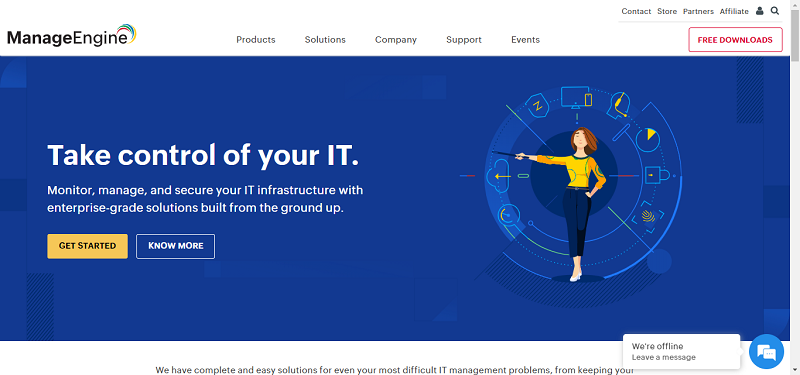The need for digital interaction has never seemed more critical than it does today. As the coronavirus continues to spread, citizens around the world are being asked to hunker down in their homes and limit their contact with others. In many cases, their only connection to the outside world is via digital channels, whether it’s working remotely via Zoom, chatting with friends over FaceTime, or doing their grocery shopping on Amazon Fresh or Instacart.
Yes, things are bad today. But, without a connected Digital Economy that enables workers and consumers to communicate and conduct business, they could be so much worse. Companies that are able to shift their customer interactions to digital platforms, and further enhance their existing digital experiences, will be best positioned to weather the pandemic and ultimately come out stronger on the other side.
Here’s one good example. Some major banks are now increasing their limits for mobile check deposits to make life easier for their customers. Whereas before the COVID-19 outbreak consumers or businesses could only deposit, say, up to $2,500 a day, today banks are allowing account holders to deposit up $10,000 via a mobile device. This means that people no longer have to go to a physical bank or ATM to deposit large checks, thus reducing their risk of coming into contact with the coronavirus.
Even after the threat of coronavirus dissipates, I believe many customer interactions will increasingly become digital ones. And, in this new world of digital-first business, it will be vital to stay on top of your IT infrastructure, and thus guarantee that your connection with your own end customers is always on and uninterrupted. I would argue that there is nothing more important, because increasingly the digital experience is the experience, period. It defines who you are, what you offer and what customers think about you.

Creating new and exciting digital experiences will be what fuels the post-virus economy. This means the onus is on companies to deploy those experiences with confidence and with certainty that they won’t be disrupted. Organizations need to stand behind any new application they launch and ensure that it delivers the perfect customer experience from the get-go.
Of course, this is easier said than done. But it must be done. When consumers take an Uber, conduct banking online or join a video conference, they expect those services to work seamlessly all the time. They don’t care about the complexity of systems that have to harmoniously mesh together to make it all work behind the screen. They just care that it works. And they will vote by taking their business elsewhere if it doesn’t.
Digital services appear seamless to customers but there is a lot happening on the backend that can easily go wrong and glitch the entire experience. It’s not just the app or service you have to monitor, it’s the network, it’s the app server, it’s the load balancer, it’s the virtualized environment, it’s all the legacy systems. The sheer complexity of the typical enterprise IT infrastructure is a complex maze to navigate when new digital experiences are launched.
And the complexity is not going away. It is only going to get more intense. Why? Because even in a post-coronavirus world, organizations will feel the pressure from nervous customers to create new apps and launch additional digital services that shift focus away from in-person interactions.
This is why your IT department needs to know if there are any problems before business is impacted—not when there are thousands of customers lined up desperately trying to interact with your service. On a small scale, what if one of your salespeople is on a video call with a customer and the feed keeps dropping? The customer wants to do business with you but is getting more and more frustrated. This is the moment of truth, yet your technology fails and blocks the sale.
To avoid that scenario, you need to quickly identify these kinds of issues and solve them in real time. And the best way to do this is by leveraging artificial intelligence (AI) to monitor your infrastructure end to end. Why AI? Because the only other way to manage all the new apps, services and systems you add to your infrastructure is to hire additional staff. And at a certain point, that is no longer feasible. If you have to keep increasing your cost basis to support every new service, then innovation quickly becomes cost-prohibitive.
AI has become essential. AI can serve as an early warning system, automatically detecting danger signs and quickly issuing IT alerts. An IT infrastructure monitoring system powered by AI can also trigger actions to prevent anticipated problems from occurring. For example, AI can figure out that, starting at 9 pm every Friday night, your mobile banking application runs at a higher frequency than it does during any other time window. It can then adjust the server threshold to cope with the spike and avoid issues. In this way, AI can help you prevent outages, save time and money, and shield your business from damaging brand impact.
It is also possible to use the data you get from your infrastructure monitoring system to drive better decision-making and be more forward-looking in your business. For Instance, when you know the effect that your services are having on your infrastructure, it becomes easier to understand user behavior and the kinds of digital experiences your customers want. In this way, you can better plan for your business and be more proactive.
It’s also crucial that digital initiatives start at the top: namely, with the CEO. All CEOs, no matter what industry they’re in, should understand that they are really running a technology business—because increasingly they are.
Citigroup, for example, hired 2,500 programmers to join its existing roster of 23,000 technology specialists. To my way of thinking, that makes Citigroup just as much a software company as a bank. In fact, I would argue that it really is a software company that operates in the world of financial services. All CEOs need to be directly engaged in the digital experience because it is the present—and the future—of their business.
The truth is that the companies that win at digital will be the winners, period. After all, digital is the reason why Netflix destroyed Blockbuster, why Tesla is towering over General Motors, and why Amazon conquered the retail industry. Even after we finally conquer coronavirus, every customer experience will need to be a digital experience. Companies that get it right today will be the big winners tomorrow.
By Mark Banfield, Chief Revenue Officer at LogicMonitor





